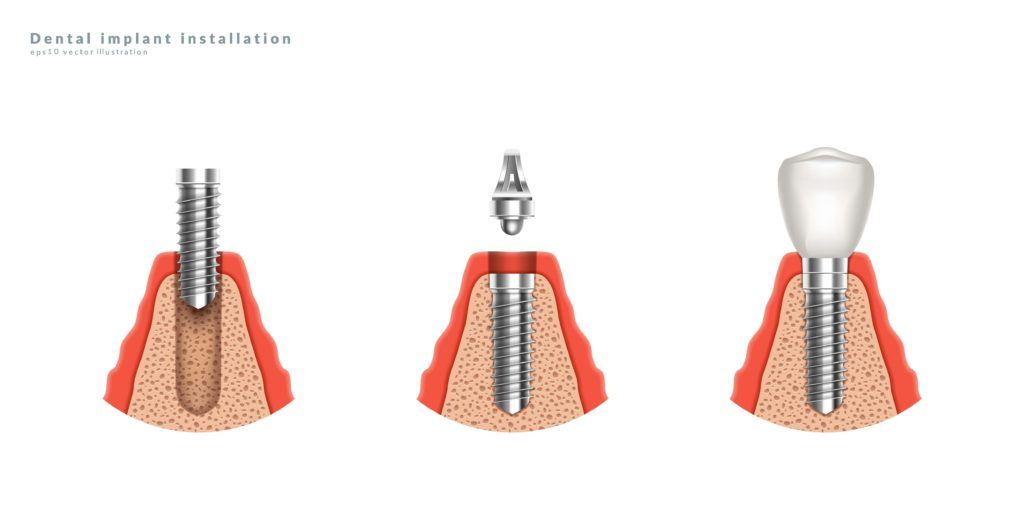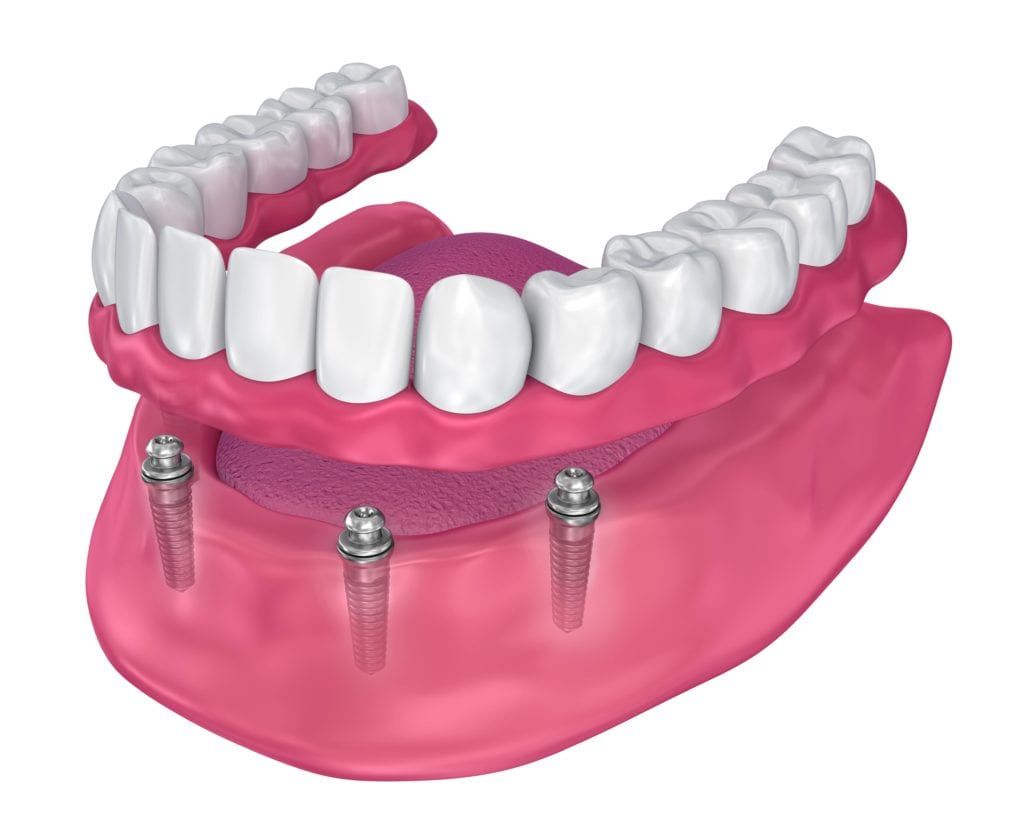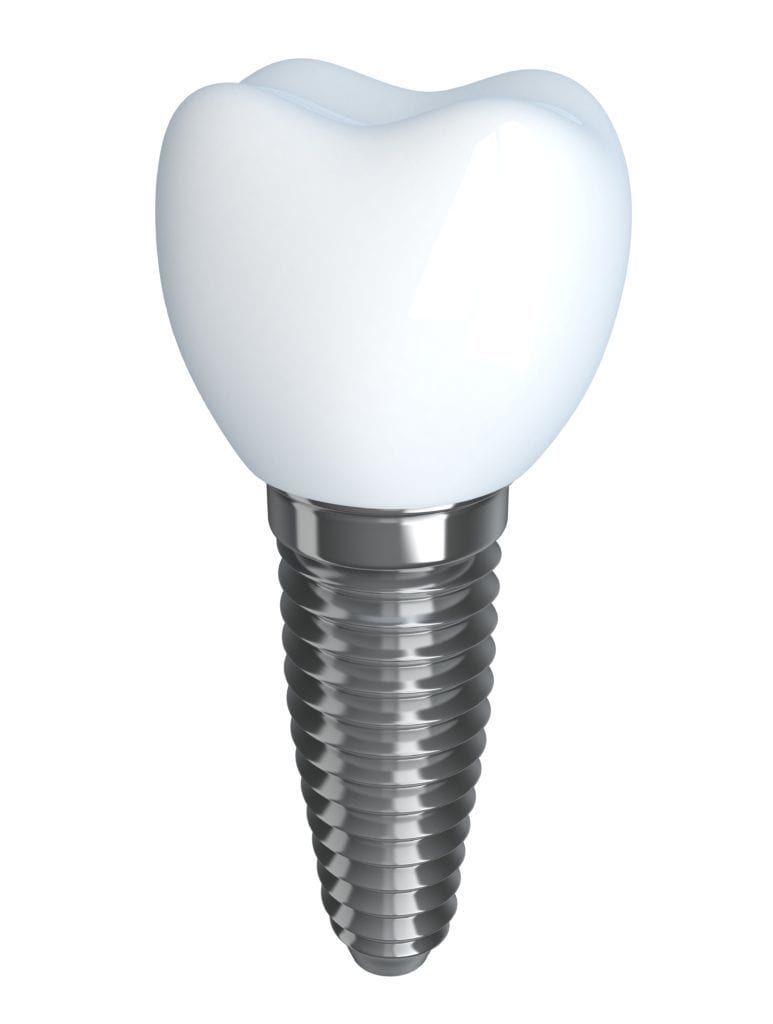Dental implants are one of the greatest dental restorations available. They offer stability, durability, reliability, aesthetics, and the ability to almost completely restore a tooth to its natural function. They are truly amazing feats of dental technology. Although you may be familiar with what dental implants are, there are many things about dental implants that you may not know.
Many people know that dental implants are artificial tooth roots that replace missing, damaged, or severely decayed teeth. These artificial tooth roots are most commonly made from titanium screws that are embedded into the jaw bone and can support a dental prosthetic, such as a crown or bridge.

Beyond this, however, there are several different types of implants that can offer specialized applications. These different types of dental implants can enable you to find a dental implant procedure that works best for you. Different types of implants are usually defined by the type of procedure used to place them, but they can also be categorized by their size or the type of connector used.
When considering the type of procedure used, there are two main choices: two-stage implants or same day implants. Two-stage implants, or the traditional implant procedure, uses a total of two procedures to properly place the implants. During the first procedure, the implant itself is embedded into the jawbone and left to heal for a few months. During the second procedure, the abutment and dental prosthesis are attached to the implant.
Same day dental implants (also known as immediate load implants or “teeth in a day”) are able to support the attachment of a dental crown soon after they are placed in the jawbone. This allows a one day dental implant dentist to restore both the aesthetics and the function in as little as one dental procedure.
Immediate load implants differ from traditional dental implants in that traditional implants usually require a waiting period of several weeks before a dental crown can be attached. This waiting period exists because the jawbone needs to fuse to dental implant before the implant is strong enough to support a dental prosthetic.
However, in order to be an ideal candidate for a same day dental implant, you must be in overall good dental and oral health. Additionally, you must have ample bone mass and generally healthy teeth. Because of this, same day dental implants may not be right for everyone.
| Pros | Cons | |
| Traditional Implants | – Highly durable – Can use a bone graft to make up for lost bone mass – Offers more options for people trying to correct multiple issues – Often a more effective procedure for most people |
– Requires two procedures – Likely will have an open space until the implant heals and prosthetic can be placed |
| Same Day Implants | – Can be placed with a single appointment – Can start eating normally sooner – Shorter recovery – Gums will fit around dental crown better – Reduced need for bone graft |
– Must already have strong bones and healthy teeth – Must follow specialized aftercare instructions to ensure proper healing – Dietary restriction to soft foods until implants have healed – Not recommended for smokers or those who grind/clench their teeth |
In terms of size, dental implants can come in standard, wide, and mini. The standard size of traditional dental implants can range from a diameter of 3.5 mm to 4.2 mm. This standard size is what is generally used for the majority of dental implant procedures performed toward the front of the mouth. For procedures performed towards the back of the mouth, wide platform implants are generally used. Wide platform implants are about 4.5 mm to 6 mm in diameter.
The main size that has earned itself a reputation are mini or narrow dental implants. Mini dental implants (MDIs) are similar to traditional dental implants, however they are narrower in diameter to accommodate smaller spaces. The average diameter of an MDI is approximately 2 mm to 3.5 mm.
Because of their smaller size, MDIs are ideal for patients who do not have sufficient space between their tooth roots. They can also be an ideal implant option for those who do not adequate bone mass to support a larger implant. In some cases, they can also be used as temporary support for healing provisional prosthesis.

However, mini dental implants also vary from traditional dental implants in that they are one single piece. Traditional dental implants are composed of an implant piece that goes into the jawbone and has a thread on the inside that allows a second piece, the abutment, to be screwed into the implant. MDIs, on the other hand, are a single piece topped with a ball protrusion that allows dentures to be attached.
Mini dental implants pros and cons include:
| Pros | Cons |
| – Can fit into small spaces – Require less bone mass – More affordable in some cases – Shorter recovery – Do not require bone graft |
– Lacks the strength of a traditional implant – Generally does not last as long – May stress the jawbone due to a different weight distribution – Not recommended for teeth grinders or clenchers |
The final discrepancy in types of implants refers to the connector that is used. The type of connector, or abutment, is important because it determines the shape of the head, which affects the dental restoration. There are three types of connectors: internal hex, external hex, and internal octagon.
Internal hex connectors are hexagon shaped openings in the implant that allow the abutments to screw into them, while external hex connectors sit on the top of the implant. Internal octagon connectors are octagon shaped openings that allow the abutments to screw into them. Each connector offers its own unique approach to connecting a dental restoration to the implant. Depending on a number of factors, any of these connectors could be used for your dental implant procedure.
While reading about these different options offered for dental implants, you may now be wondering which option would be best for you. Unfortunately, there is no easy “one size fits all” solution or answer to this question.
In order to determine which dental implant approach is right for you, you will want to schedule a consultation with Dr. Sadati. To develop your dental implant treatment plan, he will use a digital imaging system to determine the ideal position, size, type, and number of dental implants.
To find out which type of dental implant is best for you, schedule a consultation with Palm Beach’s dental implant expert Dr. Sadati of The Sadati Center for Aesthetic Dentistry today!


